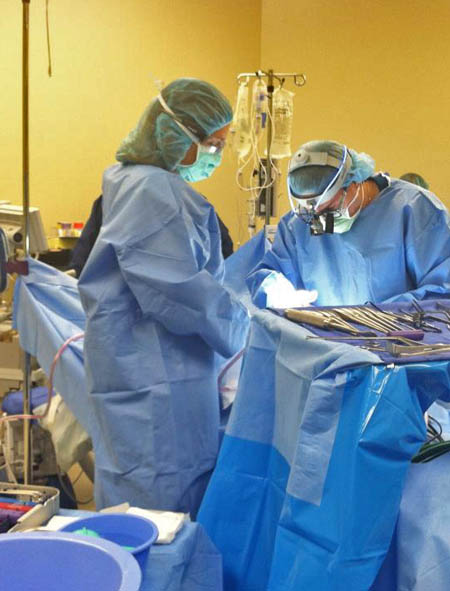Decompression
Decompression refers to the release of pressure on the nerves or spinal cord. The various decompression surgical methods can be divided into anterior decompressions (from the front) of the spine versus posterior decompressions (from the back) of the spine.
Detailed information of the surgical treatment, including surgical risks/complication and postoperative care is provided for cervical and lumbar decompressions.
Spinal Fusion
During spinal fusion, the surgeon locks together, or fuses, some of the bones in the spine. This limits the movement of these bones, which may help relieve pain. The back or neck won’t be quite as flexible. Even so, one may feel more flexible after a fusion because one can move with less pain.
Detailed information of the surgical treatment, including surgical risks/complication and postoperative care is provided for cervical, thoracic and lumbar fusions.

Instrumentation
Instrumentation, the use of plates and screws, has been developed specifically to increase the stability of the spine and to improve rates of successful spinal fusion. Because bone tends to fuse more effectively in an environment where there is little motion, instrumentation works by limiting the motion at the fused segment.
Detailed information of the surgical treatment, including surgical risks/complication and postoperative care is provided for cervical, thoracic and lumbar instrumentation.
Minimally Invasive Surgery
Minimally invasive and less invasive surgery seek to minimize the damaging effects of large muscle dissection or retraction, and attempt to leave the body as naturally intact as it was prior to surgery. The goal is to achieve rapid recovery, lessen post-operative pain, and leave cosmetically satisfying incisional scars. Advantages can also include decreased pain, and faster return to activities. These theoretical advantages have been demonstrated but not proven in many, but not all minimally invasive and endoscopic procedures.
Disc Replacement
Sometimes in spine surgery, the space between the vertebrae are left open. However, in order to maintain the normal height of the disc space, the surgeon may choose to fill the space with a bone graft. The disadvantage of fusion is that it stops the motion that normally occurs in the disc space. Alternatively, the disc space can be replaced with a device that allows sparing of motion (disc replacement), theoretically resulting in less stiffness.
Detailed information of the surgical treatment, including surgical risks/complication and postoperative care is provided for cervical and lumbar disc replacement.
